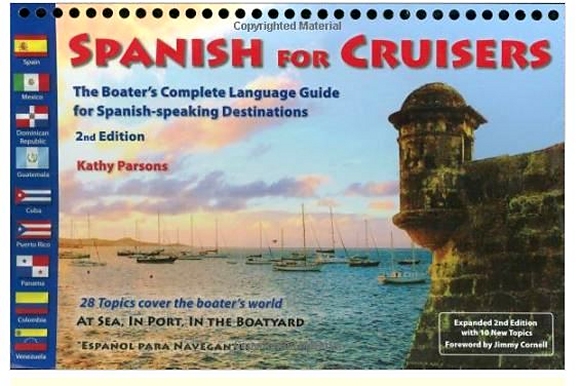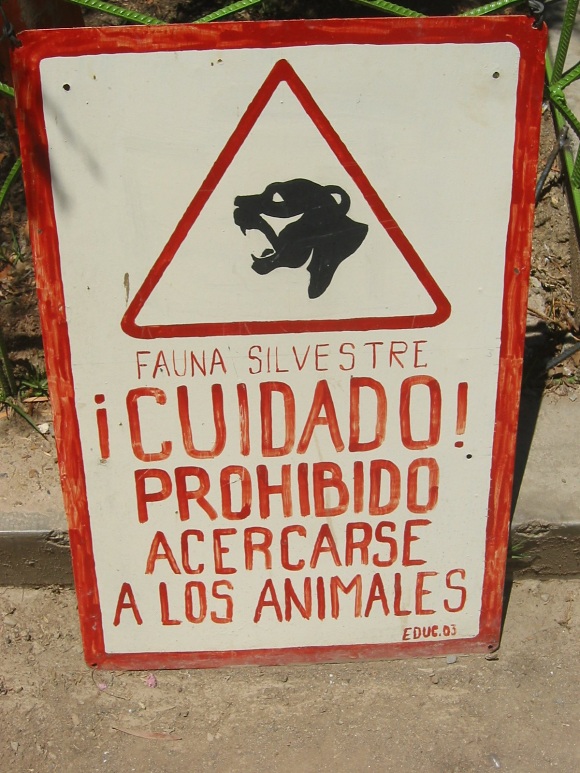FAQ - Lightning Protection
/We've seen some dandy lightning and thunderstorms. In some places, like the mid-latitudes in the southern hemisphere, they seem to be pretty rare, while in other places, like Florida and Panama, hardly a day in the summer goes by without at least one big thunder-boomer. While we know quite a few boats that have been struck, we've been fortunate so far.
Actually, the odds of any one boat getting hit are low. According to Boat U.S. statistics, only 1.2 boats out of a thousand are hit by lightning in any one year in the U.S. Even in Florida, where the most claims occur, only 4 sailboats in 1000 boats are hit. If my calculations are accurate, that means Nine of Cup would have a 50-50 chance of getting hit if it spent the next 125 years in Florida. That's pretty good odds, but knowing the odds provides very little comfort when you are aboard a boat watching a big lightning storm approach, especially when you're the only lightning conductor for miles at sea.
There are three questions that come to mind about lightning protection.
- Can a lightning hit be prevented?
- If you are hit, how safe is the crew, and can you protect the boat from major damage and/or sinking?
- Can you prevent damage to the electronics?
Unfortunately, there are no tried and true answers, although there's no shortage of experts providing conflicting answers. I am certainly no expert, but I offer my thoughts anyway.
Can a lightning hit be prevented? There are quite a few suggestions on how to do this. My own sure fire method is to stand on one foot, and rub my stomach in a circular motion while patting the top of my head. It works every time – we've never been hit by lightning. My method makes as much sense to me as most of the other methods I've read about. A Boat U.S. paper cites the following example: a boat “fitted with a popular "fuzzy" static dissipater at the top of the mast was struck twice in one year; ironically, the second time the bolt hit the dissipater even though the VHF antenna right next to it was higher (claim #0308082)”. Until there is a statistically valid study done, I will remain skeptical that a lightning strike can be prevented.
So, if the boat is hit by lightning, are the crew safe and can the boat be protected from major damage and/or sinking? Conventional wisdom seems to think it can. Up until a few years ago, most experts agreed that the best way to protect a fiberglass sailboat was to provide a single direct path down the mast and then to an underwater metal surface of at least one square foot. This could be an external metal keel or a grounding plate attached to the outside of the hull below the waterline. Connecting the mast to an encapsulated metal keel is dangerous – at the very least it would result in hundreds of pinholes through the fiberglass encapsulating the keel. All other large metal objects, like the stays and shrouds and metal tanks should be connected to the lightning system.
Let's assume you have a typical sailboat with an aluminum mast. You have installed the recommended lightning protective system and your boat is hit by lightning. The lightning will probably strike the highest point – the VHF antenna at the top of the mast. The voltage potential of the lightning has been estimated to be 100 million volts. A hundred million volts packs quite a wallop. The enormous current generated will find its way to the water through any path it can. Even if the bulk of the current travels down the mast and into the water via the grounding plate, huge voltage potentials still exist in the other metal objects in the boat like the stays and shrouds. Despite the fact that these are connected to the grounding plate, because of these tremendous voltages present, arcing may occur across materials that are usually thought of as insulators like air and fiberglass, resulting in “side-flashes” as the lightning finds alternate, shorter paths to the water. These side-flashes can create an electrocution hazard to the crew and/or damage the hull. So the answer to the second question is a definite maybe.
The third question is whether the on-board electronics can be protected. Most sailboats that are hit by lightning lose most, if not all, of their on-board electronics due to electromagnetic induction. When a bolt of lightning hits your sailboat, a sudden and immense current flows down through the mast and other conductors, inducing currents in any nearby conductors like antennas, electrical wiring and even the conductors on circuit boards. These induced current surges create voltage surges. Unfortunately, most of our modern electronics, like laptops, chart plotters, GPS's, and autopilots are quite intolerant of voltage surges. Some protection for the electronics can be provided by adding transient voltage surge suppressors (TVSS) to antenna and data cables, and a metal oxide varistor (MOV) to the power cables, but these are not always effective.
Back in 1831, Michael Faraday discovered that if you construct a conductive enclosure, the electromagnetic fields will only produce currents on the surface of the enclosure itself, isolating any conductors inside the enclosure. Such an enclosure is now called a Faraday cage. If you have a microwave oven on-board, this might work as a Faraday cage for your electronics. While it isn't practical to move all our electronics to the microwave whenever a thunderstorm approaches, we do store a backup GPS and VHF there.
A few years ago, the National Fire Protection Association (NFPA) suggested another approach for lightning protection. While there isn't all that much empirical data on lightning strikes to boats, there are several centuries of information on how to protect buildings on land. Buildings are protected by putting a number of heavy conductors at intervals around the outside of the building. These conductors are connected to one or possibly several terminals on the roof, and to grounding stakes buried in the earth at the bottom. In addition, all other metal conductors that a person might come in contact with, like gutters, downspouts, exterior railings, pipes, etc., are connected to the lightning protection system.
Applying this approach to boats, the NFPA published an updated standard (NFPA 780) in 2011 that recommends using the stays and shrouds as well as the mast as conductors to the water. All these conductors would be connected together at deck level, and several paths to the water would be implemented. This, in theory, would greatly reduce the likelihood of side-flashes. Since all these conductors would form a rudimentary Faraday cage, it might help protect on-board electronics as well, especially if TVSS and MOV devices were also incorporated in the lightning protection system.
In theory, the new standard seems to make sense, but there are several issues to think about before taking the plunge and incorporating a new lightning protection system. First, there is no one formula for every boat. Each boat design has to be carefully evaluated with respect to stays, shrouds, chain plates, internal metal tanks, thru-hulls, metal lifelines and other metal conductors when designing the lightning protection. Once designed, it will be difficult and expensive to retrofit an existing vessel.
In addition, since the standard is relatively new, there aren't that many boats that have incorporated the new system, and therefore there is not much data showing whether the system really works and/or whether the standard needs to be tweaked a bit in the next revision. I know, that's sort of a “Catch-22” - no one wants to incorporate the new system until there is more data, and there won't be any more data until more boats incorporate the system.
So what have we done on Nine of Cups? To date, we have virtually no lightning protection system. We will take a “wait and see” position on the new standard. And of course we will continue with the lightning prevention technique that has worked so well for us in the past - standing on one foot while rubbing our stomachs and patting our heads and hope the odds stay in our favor. So far...so good.










 was a godsend when it came to talking about everything from boat parts and repairs to getting medical help or buying groceries. We highly recommend it, if you're heading to Spanish-speaking countries. It offers not only bi-lingual translations, it also has pictures. Pictures, by the way, are a great way to communicate if you're stuck for a foreign translation of any part. As long you can draw it somewhat credibly, you'll find what you need if it's available. Unlike many English-speakers, we found the Latin and South Americans to be especially helpful and patient with our poor Spanish skills.
was a godsend when it came to talking about everything from boat parts and repairs to getting medical help or buying groceries. We highly recommend it, if you're heading to Spanish-speaking countries. It offers not only bi-lingual translations, it also has pictures. Pictures, by the way, are a great way to communicate if you're stuck for a foreign translation of any part. As long you can draw it somewhat credibly, you'll find what you need if it's available. Unlike many English-speakers, we found the Latin and South Americans to be especially helpful and patient with our poor Spanish skills.
 was very helpful this time. I was one of the editors, so we were pretty proud of the finished product.
was very helpful this time. I was one of the editors, so we were pretty proud of the finished product.